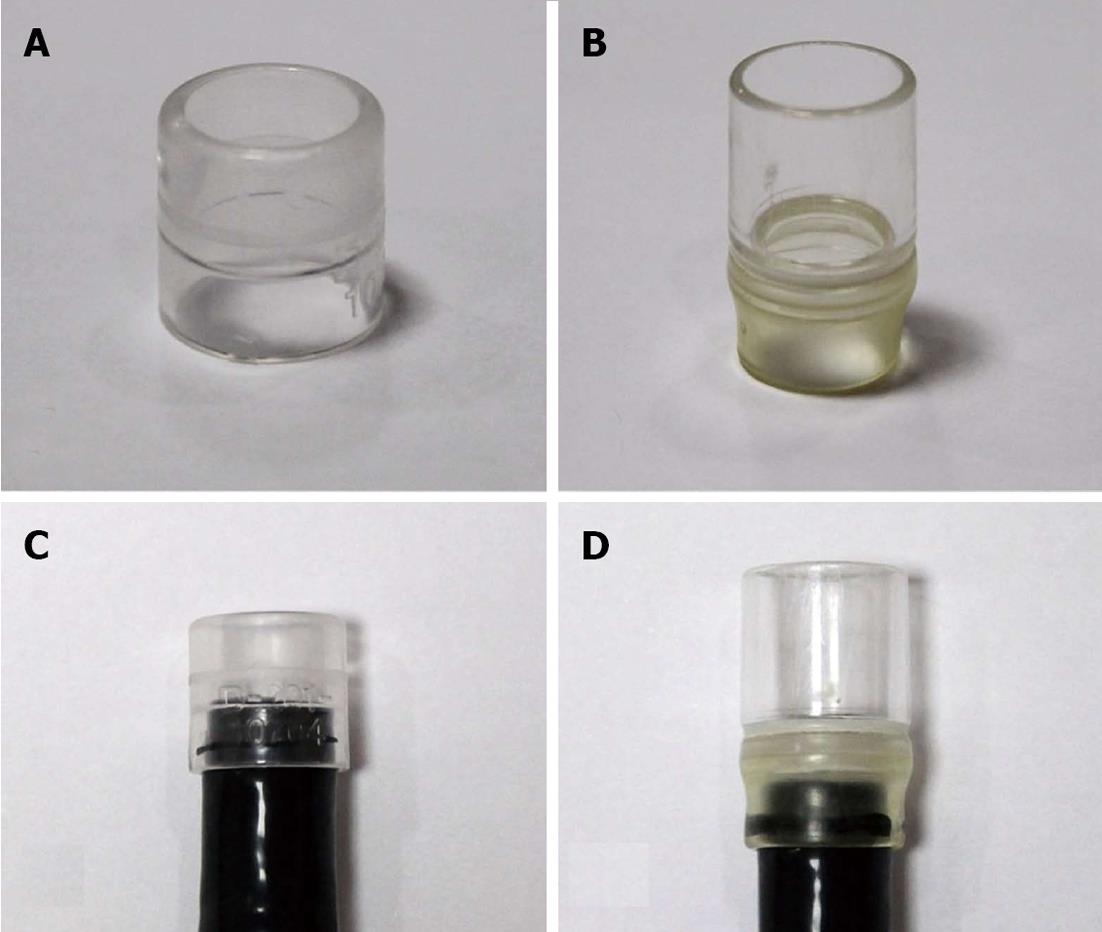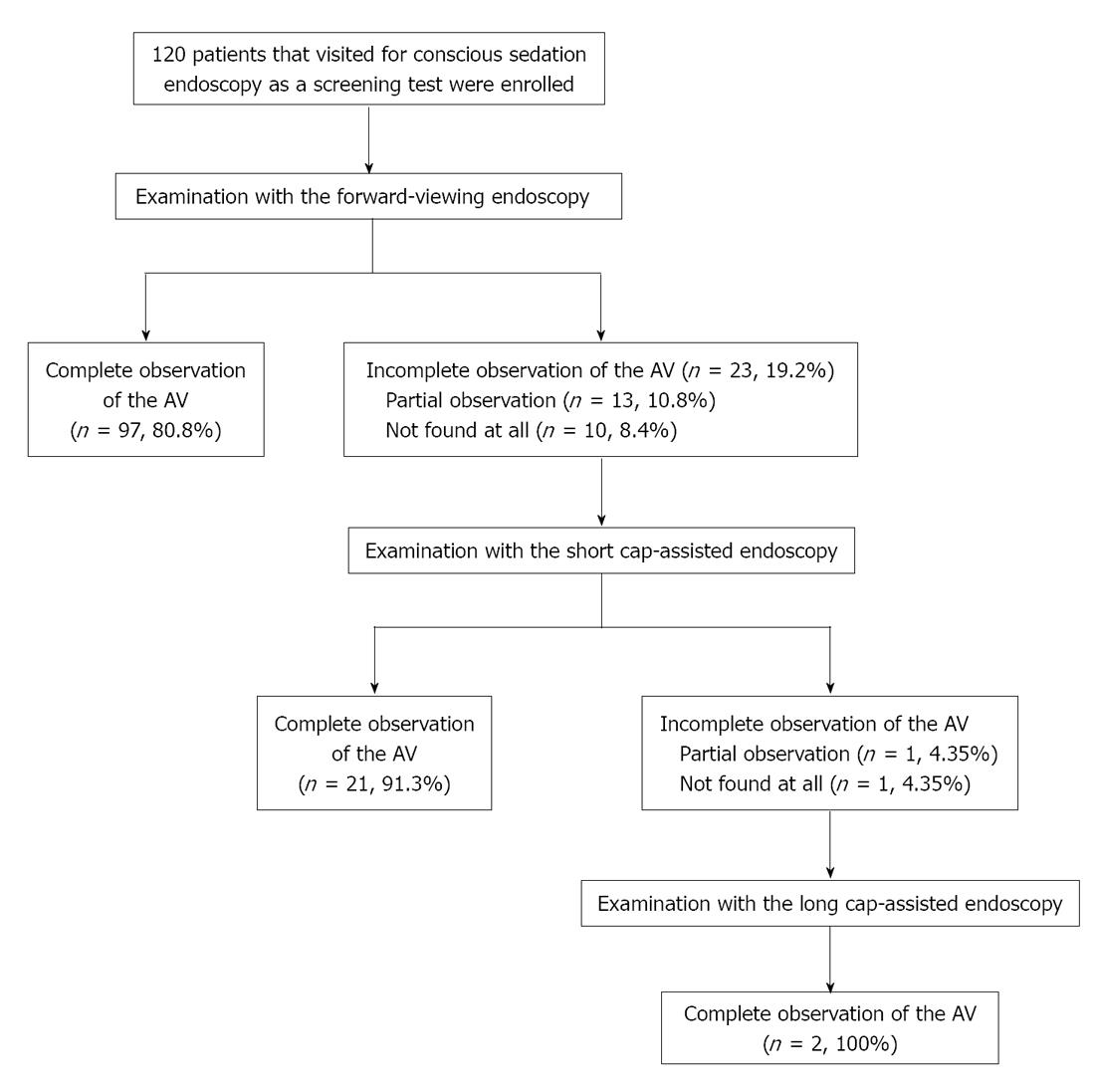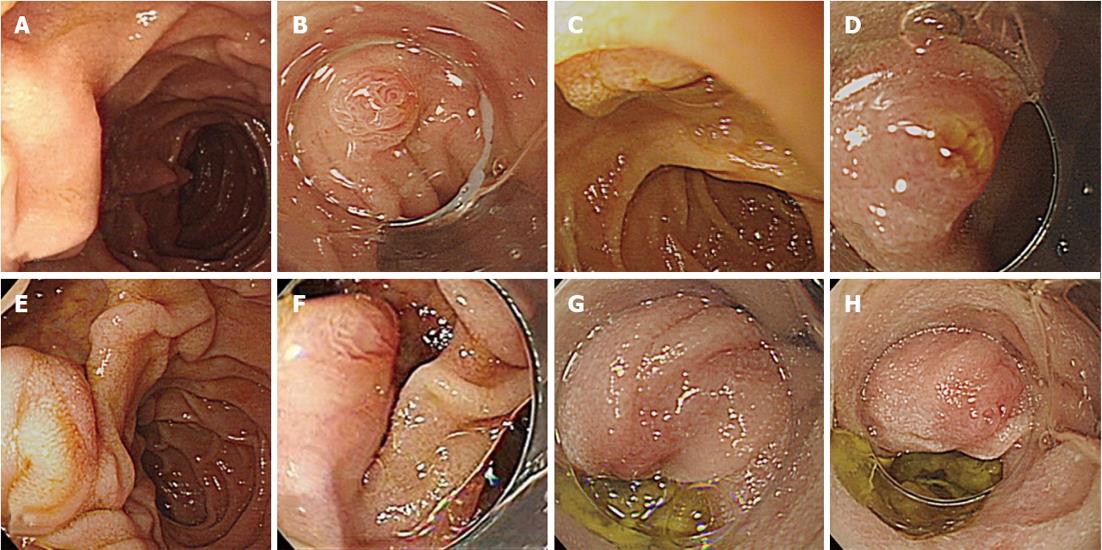Copyright
©2013 Baishideng Publishing Group Co.
World J Gastroenterol. Apr 7, 2013; 19(13): 2037-2043
Published online Apr 7, 2013. doi: 10.3748/wjg.v19.i13.2037
Published online Apr 7, 2013. doi: 10.3748/wjg.v19.i13.2037
Figure 1 Endoscopic transparent cap.
A: Short transparent cap (Olympus distal attachment D-201-10704, outer diameter: 11.35 mm, length from distal end of endoscope: 4 mm; Olympus Tokyo, Japan); B: Long transparent cap (Olympus distal attachment MH-593, outer diameter: 12.9 mm, length from distal end of endoscope: 11 mm; Olympus); C: Short cap attached to the tip of a forward-viewing endoscope; D: Long cap attached to the tip of a forward-viewing endoscope.
Figure 2 Flow diagram of patient enrollment and examinations.
In total, 120 patients were examined by forward-viewing endoscopy. In cases when complete observations of the ampulla of Vater (AV) were unsuccessful, an additional examination for the AV was conducted by short cap-assisted endoscopy. If that examination was unsuccessful, the short cap was replaced with a long cap, and a re-examination was performed.
Figure 3 Outcomes of conventional endoscopy.
A: Complete observation of the ampulla of Vater (AV), including the orifice, by forward-viewing endoscopy; B: Partial observation of the AV with a folded mucous membrane by forward-viewing endoscopy; C: The AV was not found during forward-viewing endoscopy.
Figure 4 Incomplete observation of the ampulla of Vater by conventional endoscopy and outcomes of cap-assisted endoscopy.
A: Incomplete observation of the ampulla of Vater (AV) by forward-viewing endoscopy due to a folded mucous membrane; C: Incomplete observation of the AV due to the close proximity of the endoscope tip to a superior ampulla lesion; E: Incomplete observations of the AV on the edge of diverticulum; B, D, F: Complete observation of the AV, including the orifice, by short cap-assisted endoscopy (A→B, C→D, E→F); G: Incomplete observation of the AV by short cap-assisted endoscopy due to a loop in the scope; H: Complete observation of the AV by long cap-assisted endoscopy (G→H).
- Citation: Choi YR, Han JH, Cho YS, Han HS, Chae HB, Park SM, Youn SJ. Efficacy of cap-assisted endoscopy for routine examining the ampulla of Vater. World J Gastroenterol 2013; 19(13): 2037-2043
- URL: https://www.wjgnet.com/1007-9327/full/v19/i13/2037.htm
- DOI: https://dx.doi.org/10.3748/wjg.v19.i13.2037












